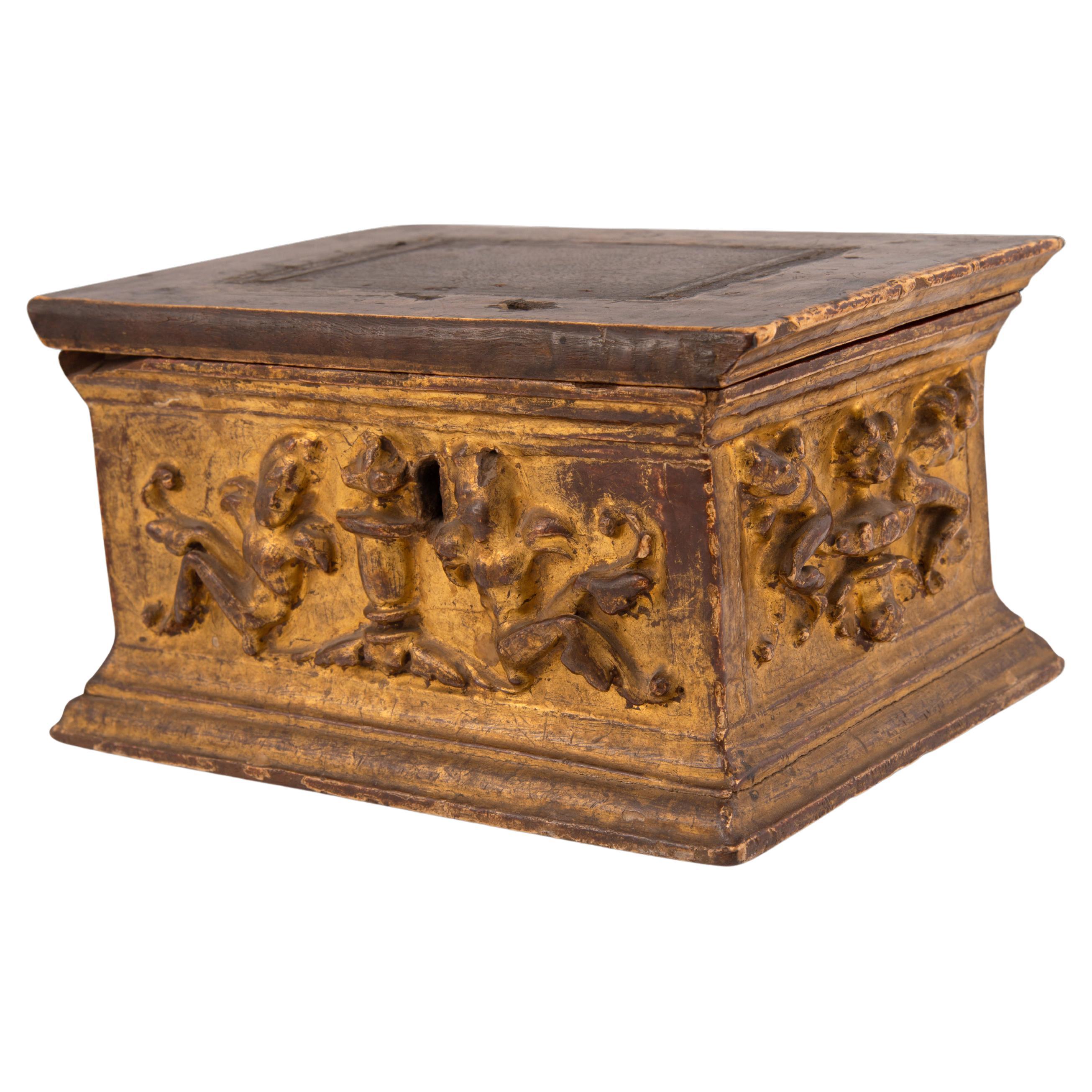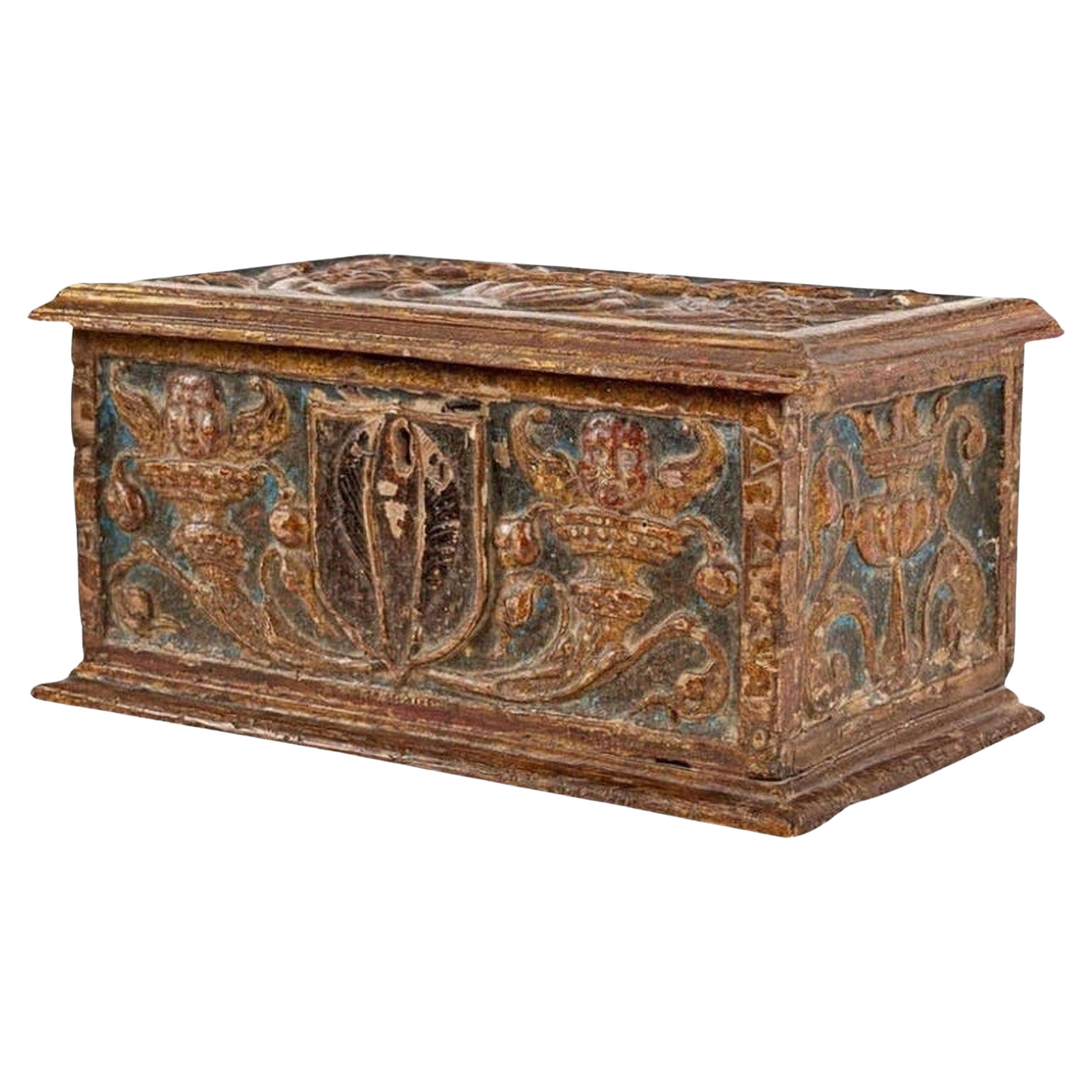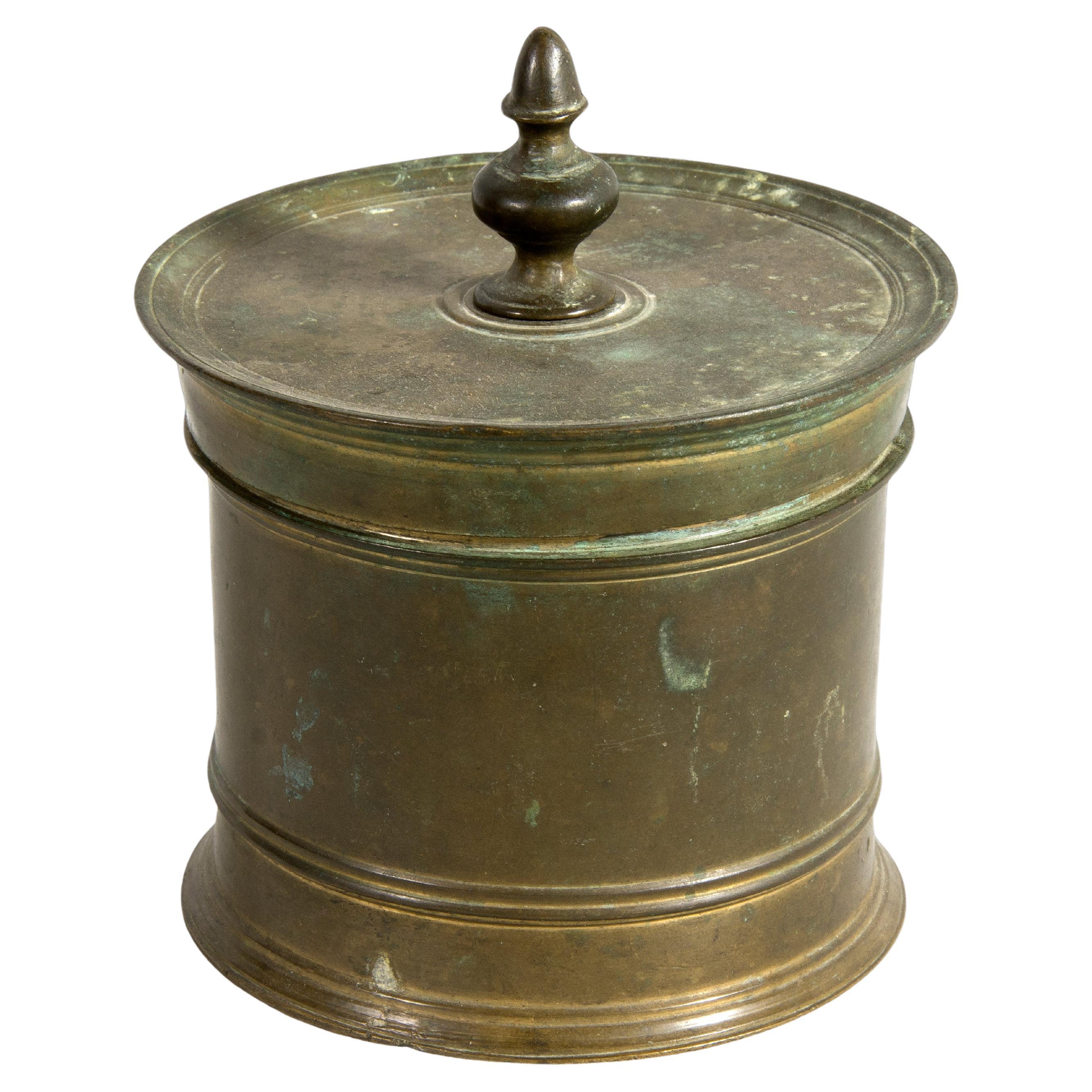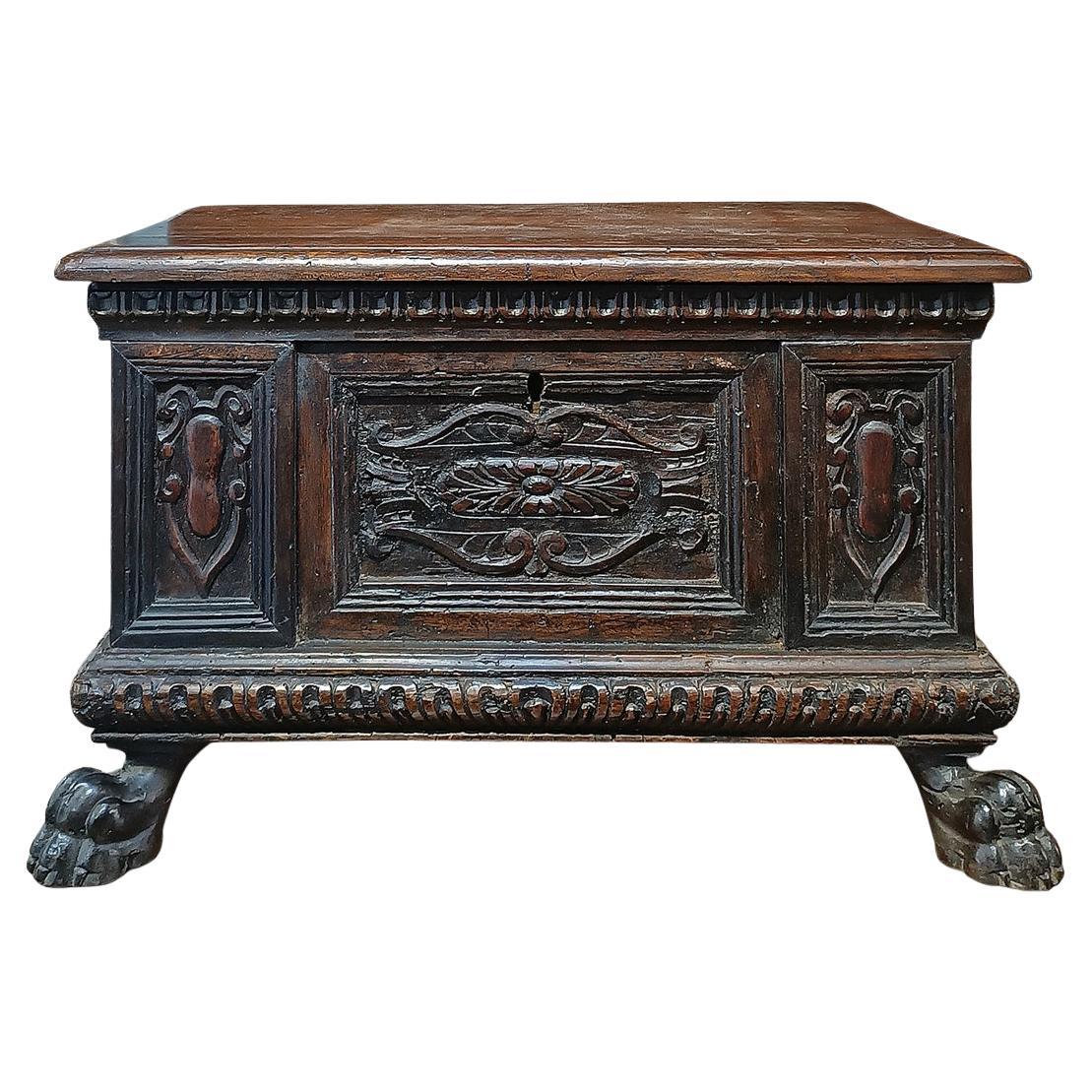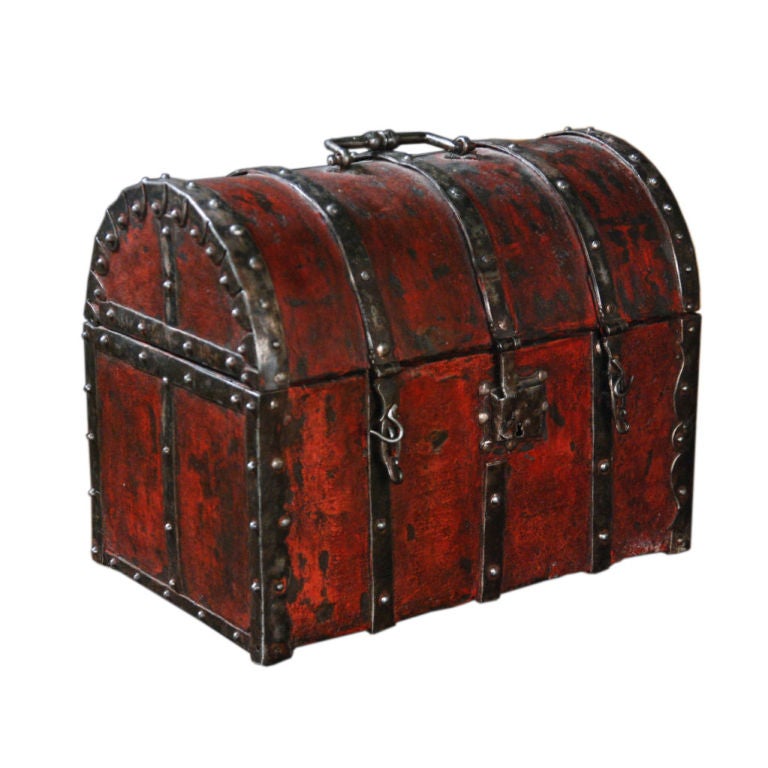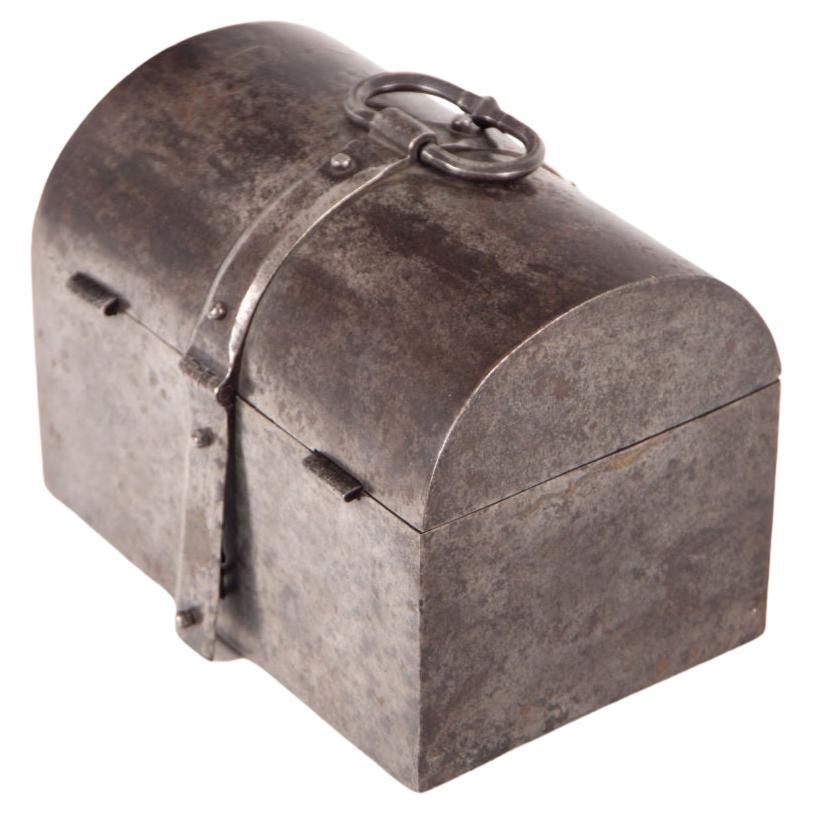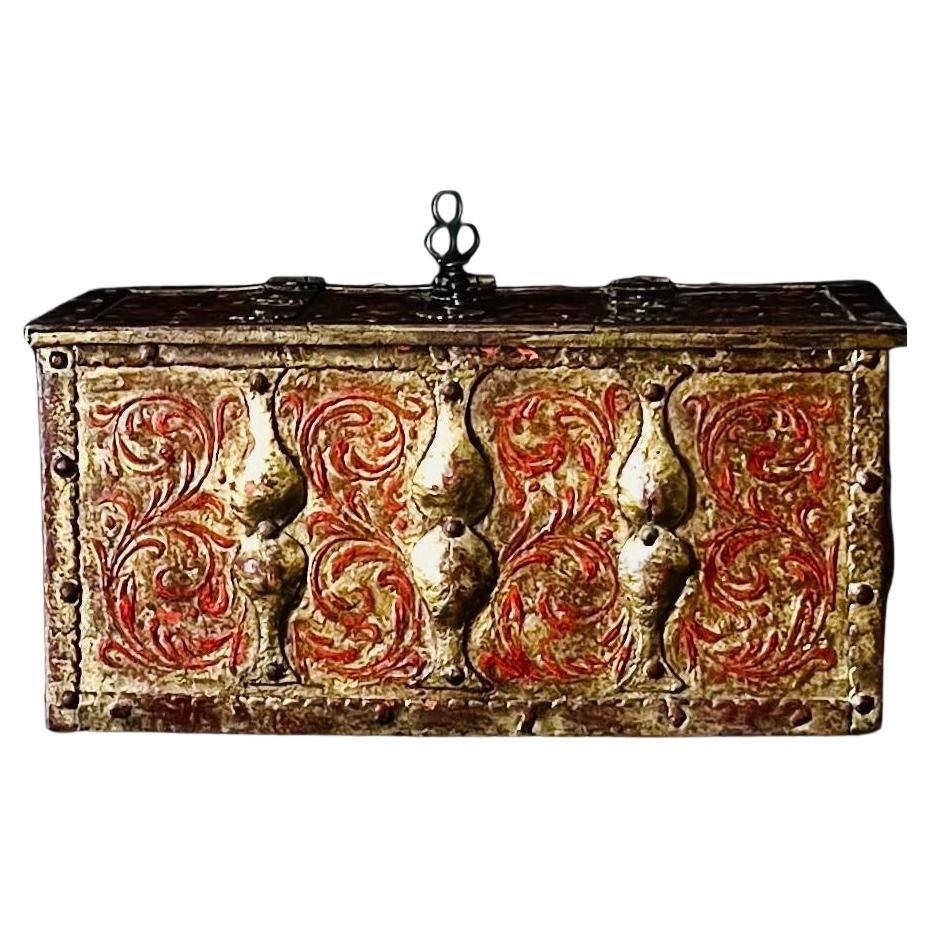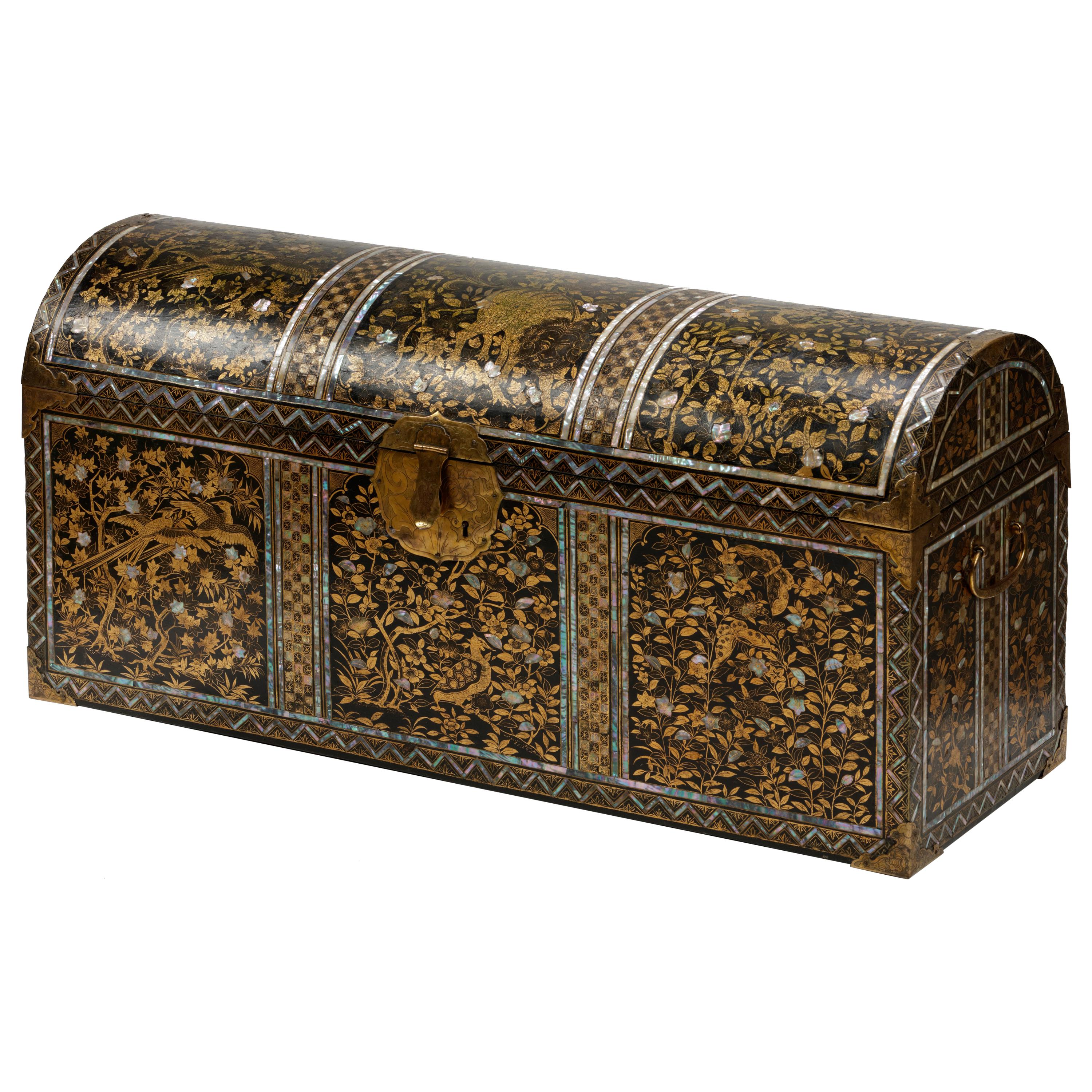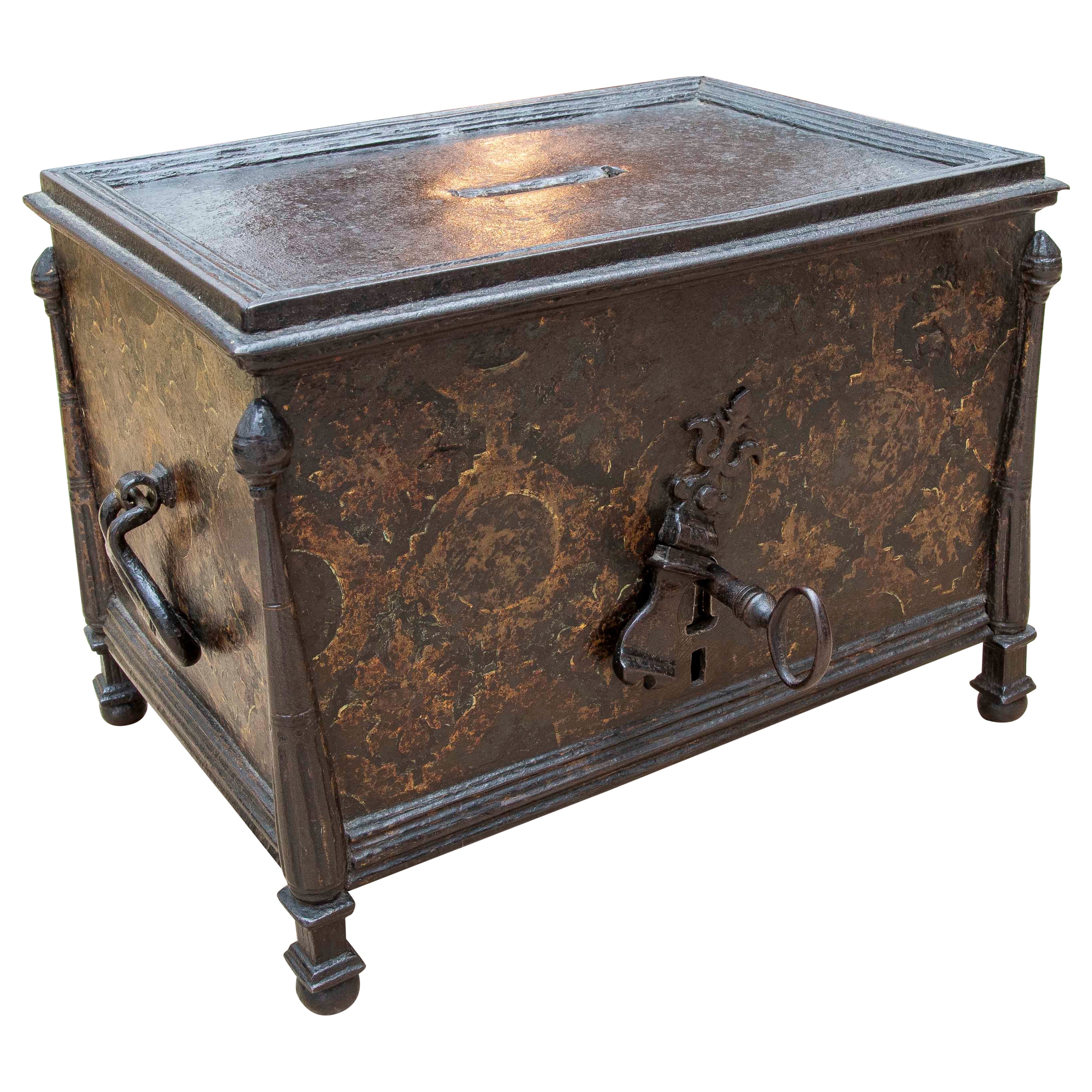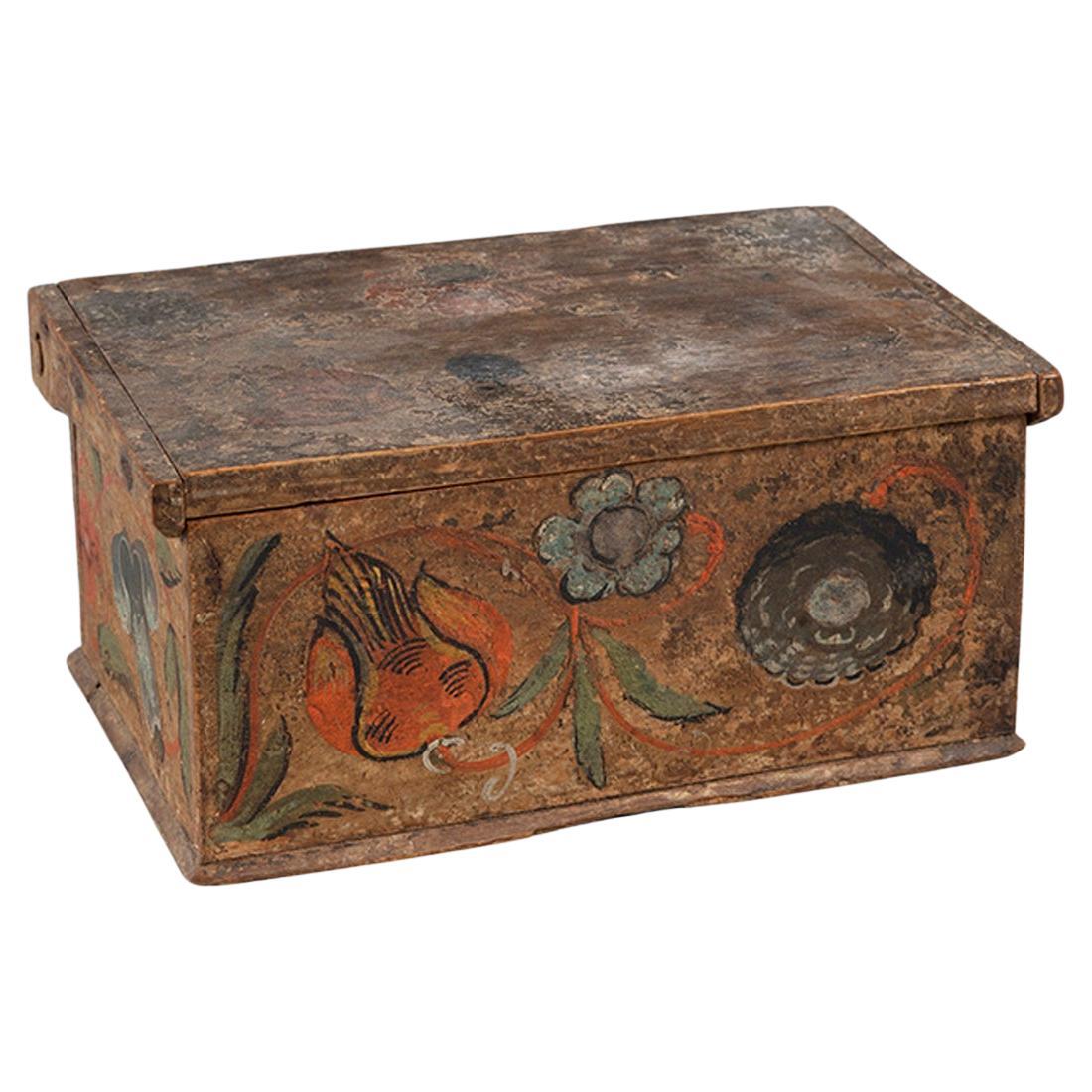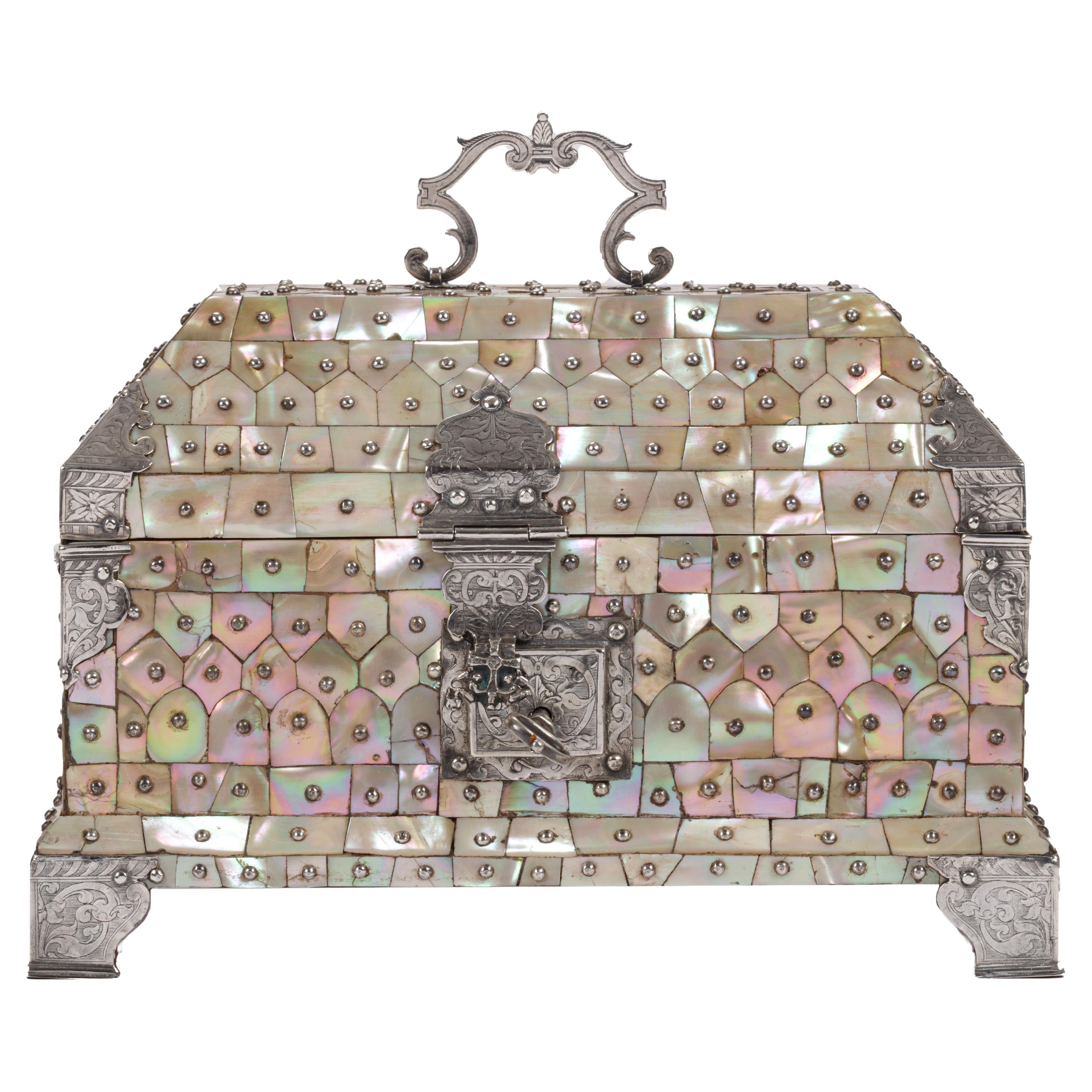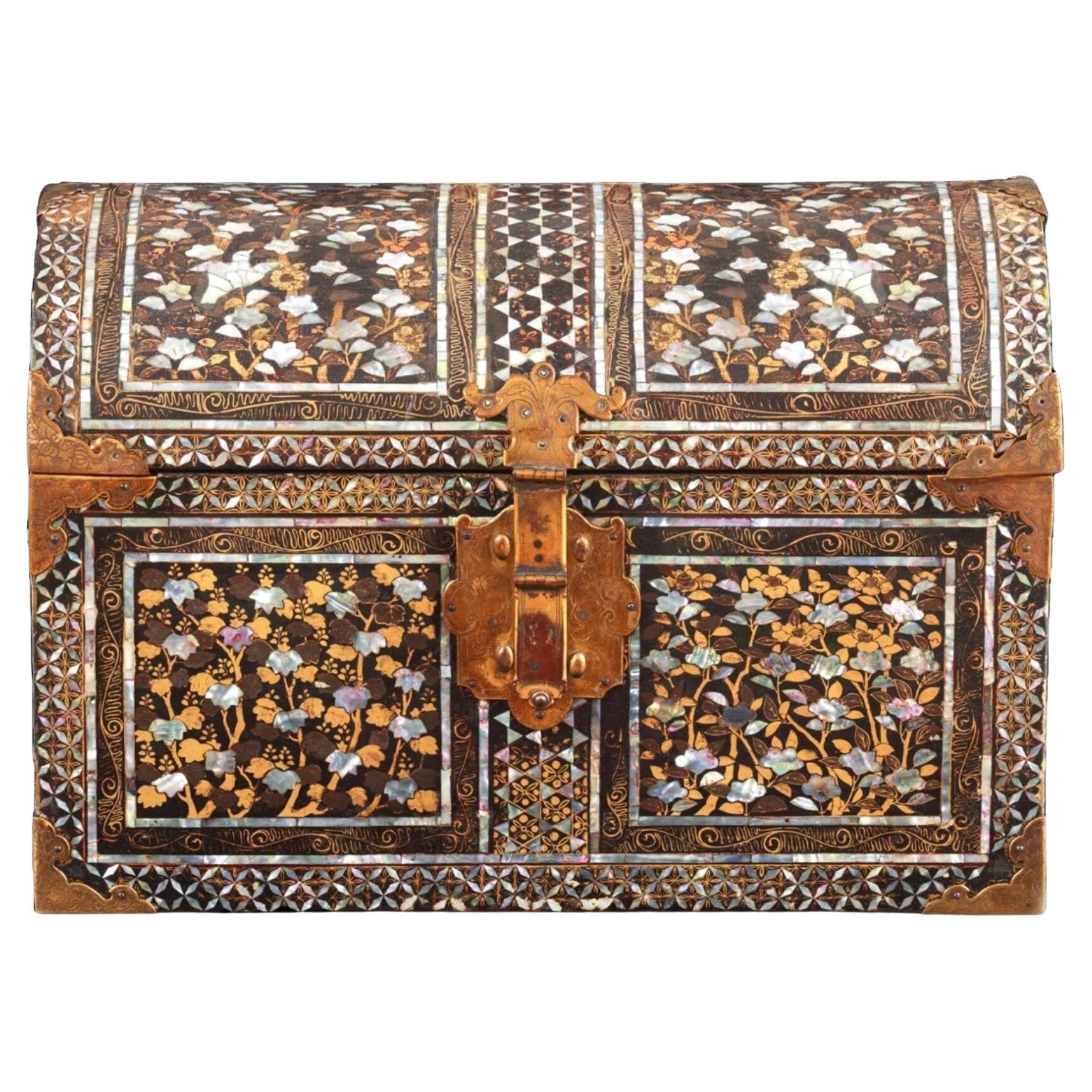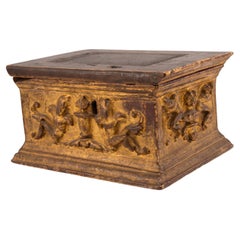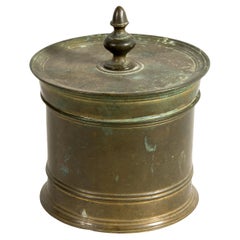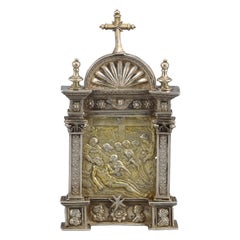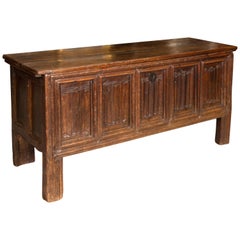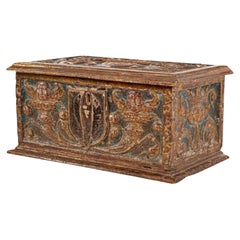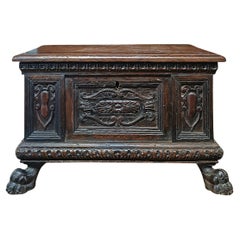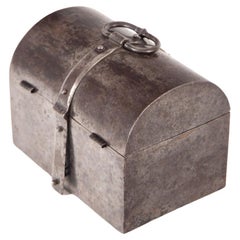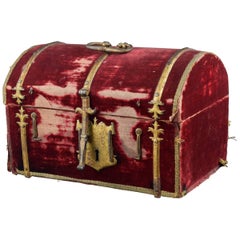
Velvet Covered Chest, Spain, 16th Century
View Similar Items
Want more images or videos?
Request additional images or videos from the seller
1 of 8
Velvet Covered Chest, Spain, 16th Century
$3,912.47List Price
About the Item
- Dimensions:Height: 6.7 in (17 cm)Width: 9.45 in (24 cm)Depth: 6.3 in (16 cm)
- Style:Renaissance (Of the Period)
- Materials and Techniques:
- Place of Origin:
- Period:
- Date of Manufacture:16th Century
- Condition:Wear consistent with age and use. Minor losses.
- Seller Location:Madrid, ES
- Reference Number:Seller: Z64851stDibs: LU295139458003
About the Seller
4.9
Vetted Professional Seller
Every seller passes strict standards for authenticity and reliability
Established in 1985
1stDibs seller since 2017
349 sales on 1stDibs
Typical response time: 17 hours
Authenticity Guarantee
In the unlikely event there’s an issue with an item’s authenticity, contact us within 1 year for a full refund. DetailsMoney-Back Guarantee
If your item is not as described, is damaged in transit, or does not arrive, contact us within 7 days for a full refund. Details24-Hour Cancellation
You have a 24-hour grace period in which to reconsider your purchase, with no questions asked.Vetted Professional Sellers
Our world-class sellers must adhere to strict standards for service and quality, maintaining the integrity of our listings.Price-Match Guarantee
If you find that a seller listed the same item for a lower price elsewhere, we’ll match it.Trusted Global Delivery
Our best-in-class carrier network provides specialized shipping options worldwide, including custom delivery.More From This Seller
View AllChest. Carved wood, metal. Spanish school, 16th century.
Located in Madrid, ES
Chest. Carved wood, metal. Spanish school, 16th century.
Rectangular casket with a flat lid decorated on the outside with a series of figurative reliefs in a symmetrical arrangemen...
Category
Antique 16th Century Spanish Renaissance Decorative Boxes
Materials
Metal, Other
Hostiary. Bronze. 16th century.
Located in Madrid, ES
Hostiary. Bronze. 16th century.
A circular, tubular bronze box with a finial lid, to which a piece of tubing is attached, forming a press for the interior of the case. It features a...
Category
Antique 16th Century European Other Decorative Boxes
Materials
Bronze
Silver Pax O Portapaz, Spain, 16th Century
Located in Madrid, ES
Portapaz. Silver in its color and gilded. Century XVI.
Portapaz made of silver that has a handle (decorated with delicate plant motifs similar to those of the pilasters) and a female and a male bust at the bottom, as well as other architectural elements on the back, and, on the front, an architectural composition classicist basement (with busts flanking a flower and a cross), two pilasters (vegetal decoration and capital recalling the composite order) with entablature (flowers flanking an angel's head; moldings), and a semicircular arch finish with elements veined in relief under cross and flanked by two architectural motifs in the upper part. This composition frames and enhances a gilt silver relief where you can see the Lament or Cry over the Body of Christ, with the Virgin holding the head of Jesus, Saint John at her side, the Magdalene and other characters, a cross following the group and a landscape background with houses and plant elements. This architectural structure mentioned is similar to the one present in other 16th century portapaces, such as that of the Magdalena de Dos Hermanas parish (Hernando de Ballesteros el Mozo, around 1575); or that of the Galaroza parish (same author and date); or that of the portapaz of San Miguel de Jerez de los Caballeros (in some details); etc. As for the relief, it is possible to clearly see a strong Italian influence, and the similarity between it and important pieces such as the Portapaz known as “de Cisneros by Juan de Burgos (1493-1497; MuseoCatedralicio de Alcalá de Henares), as well as in paintings and reliefs. Also noteworthy are both the male and female busts in the lower area and the Maltese cross (or Saint John's) that appears in this area. This symbol was used since the 12th century as an insignia by the Knights Hospitallers of the Order of Saint John of Jerusalem, also known as the Order of Malta...
Category
Antique 16th Century Spanish Renaissance Religious Items
Materials
Silver
16th Century Gothic Chest, Pinewood, Metal
Located in Madrid, ES
The relief of folded cloths was common in the Gothic furniture, coming from Flanders in the 15th century and used in Spain in a common way well into the 16th century, although 17th c...
Category
Antique 16th Century Spanish Renaissance Blanket Chests
Materials
Metal
“Ressurrection”, Polychromed Wood, Spanish School, 16th Century
Located in Madrid, ES
The relief was probably a door of the Sagrario. The piece follows a customary decoration in the tabernacles of the Renaissance and the Baroque. Compare, for example, with the sevente...
Category
Antique 16th Century Spanish Renaissance Religious Items
Materials
Other
Wrought Iron Grille gate, Spain, 16th Century
Located in Madrid, ES
Typologically, it is a partial architectural grating with an ornamental and defensive purpose at the same time. Likewise, it clearly shows some of the striking decorative and typolog...
Category
Antique 16th Century Spanish Renaissance Religious Items
Materials
Wrought Iron
You May Also Like
Spanish Renaissance Casket of the 16th Century
Located in Madrid, ES
Spanish Renaissance casket,
16th century
In carved, polychrome and gilded wood decorated with a vase with horns of plenty, heads of cherubs and fruits.
In the lock a shield with two ...
Category
Antique 16th Century Dutch Baroque Decorative Boxes
Materials
Wood
$4,268 Sale Price
20% Off
LATE 16th CENTURY SMALL WALNUT BOX
Located in Firenze, FI
Elegant solid walnut small box, entirely hand-carved. The rectangular chest features an opening top, ideal for storing objects. The front, back, and sides are decorated with geometri...
Category
Antique 16th Century Italian Renaissance Decorative Boxes
Materials
Nutwood
A 16th/17th Century Style French Red Lacquered Small Chest
Located in Sheffield, MA
An Early & Rare French Red Lacquered
Leather Bound Wood & Iron Small Chest
Height 15 in. Depth 9 in. Width 13 in. ...
Leather Bound Wood & Iron Small Chest
Height 15 in. Depth 9 in. Width 13 in. ...
Category
Antique 18th Century and Earlier French Boxes
Rare 16th Century Nuremberg Box
Located in Madrid, ES
Rare 16th century Nuremberg box
In iron, measurements: 13 x 18 x 12 cm
Good condition.
Category
Antique 16th Century German Baroque Jewelry Boxes
Materials
Iron
Antique 16th century Venetian Painted Gold Gilt Iron Strongbox with Original Key
Located in Doha, QA
An extraordinarily rare and visually striking 16th-century Venetian iron treasure coffer, showcasing the height of Renaissance artistry and engineering. Crafted in the early to mid-1...
Category
Antique 16th Century Italian Renaissance Decorative Boxes
Materials
Gold, Iron
$17,500
Free Shipping
Large Japanese Namban Lacquer Coffer Arqueta, 16th Century
Located in Amsterdam, NL
A large Japanese Namban lacquer arqueta coffer for the Portuguese market
Kyoto, Momoyama-period, late 16th century
In Hinoki cypress lacquered in ...
Category
Antique 16th Century Japanese Decorative Boxes
Materials
Mother-of-Pearl, Wood
Recently Viewed
View AllMore Ways To Browse
Wrought Iron Applique
Antique Safe Locks
Used Tack Box
Fleur De Lis Box
Renaissance Casket
Lock Of Hair
Used Catholic Vestments
Iron Casket
16Th Century Casket
Safe Deposit Box
15Th Century Casket
Antique Match Box Holder
Betel Nut
French Ivory Box
Stash Box
Antique Bonbonniere
Antique Metal Bins
Antique Opaline Boxes
